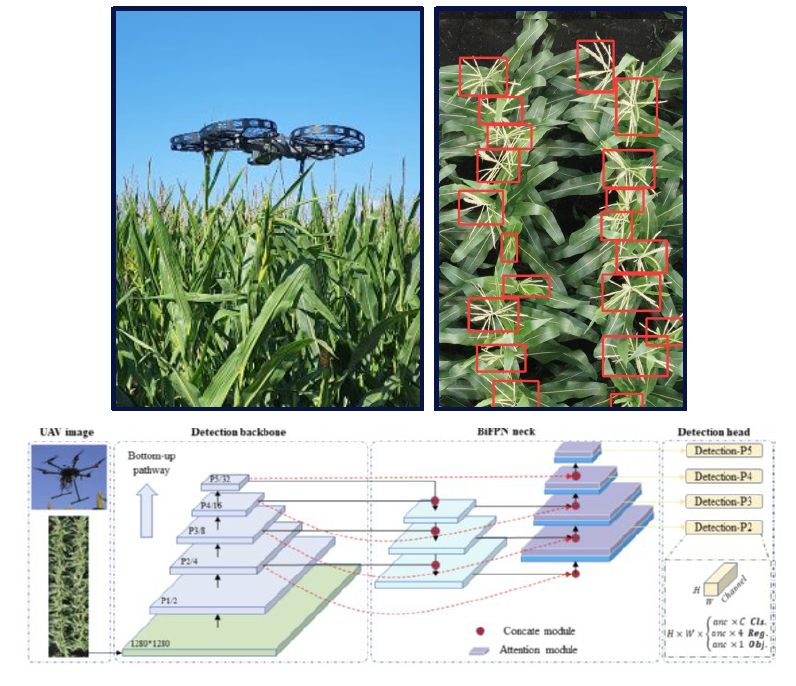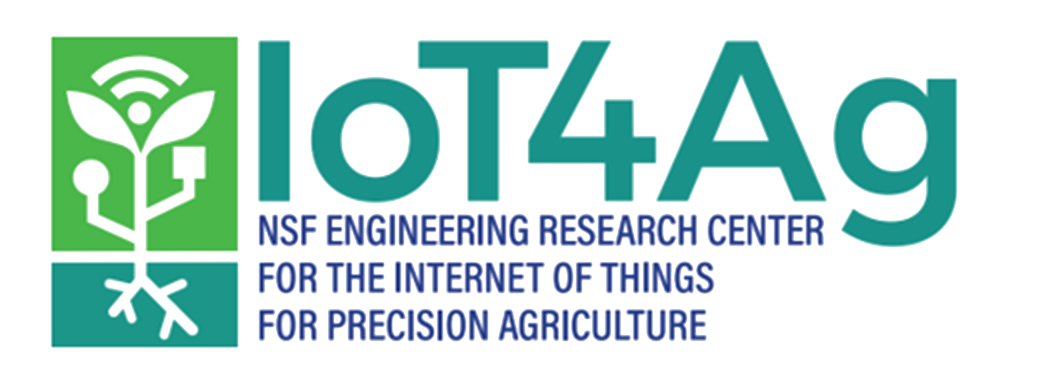Counting Flowers
Outcome/Accomplishment
Flowering is a critical stage in crop physiology that is difficult to observe via remote sensing. Researchers at the NSF-funded Internet of Things for Precision Agriculture (IoT4Ag) Engineering Research Center (ERC), headquartered at the University of Pennsylvania, developed a new deep-learning-based flower tassel detection and counting algorithm.
Impact/Benefits
Monitoring flowering in maize and sorghum involves observation of the emergence of the tassel/panicle and the opening of the individual flowers. The required resolution and impact on the plants, either by local turbulence from UAV (drone) rotors or interaction of wheeled vehicles with the plants, makes these processes extremely difficult to observe via remote sensing. This project is developing a platform for improved data acquisition as well as robust algorithms for improved extraction of diverse tassels and prediction models.
Explanation/Background
A new deep-learning based tassel detection and counting algorithm was developed using extensions to Yolov5. The algorithm demonstrated superior performance to other benchmark approaches. A journal paper has been accepted by IEEE JSTARS. Extensions of the algorithm for early season, small tassel detection were implemented. Data for algorithm validation were collected through drone flights at the Purdue testbed. A new platform for multi-angle data acquisition at close range was acquired and preliminary testing was performed in the field.
Location
Philadelphia, Pennsylvaniawebsite
Start Year
Microelectronics and IT
Microelectronics, Sensing, and IT
Lead Institution
Core Partners
Fact Sheet
Outcome/Accomplishment
Flowering is a critical stage in crop physiology that is difficult to observe via remote sensing. Researchers at the NSF-funded Internet of Things for Precision Agriculture (IoT4Ag) Engineering Research Center (ERC), headquartered at the University of Pennsylvania, developed a new deep-learning-based flower tassel detection and counting algorithm.
Location
Philadelphia, Pennsylvaniawebsite
Start Year
Microelectronics and IT
Microelectronics, Sensing, and IT
Lead Institution
Core Partners
Fact Sheet
Impact/benefits
Monitoring flowering in maize and sorghum involves observation of the emergence of the tassel/panicle and the opening of the individual flowers. The required resolution and impact on the plants, either by local turbulence from UAV (drone) rotors or interaction of wheeled vehicles with the plants, makes these processes extremely difficult to observe via remote sensing. This project is developing a platform for improved data acquisition as well as robust algorithms for improved extraction of diverse tassels and prediction models.
Explanation/Background
A new deep-learning based tassel detection and counting algorithm was developed using extensions to Yolov5. The algorithm demonstrated superior performance to other benchmark approaches. A journal paper has been accepted by IEEE JSTARS. Extensions of the algorithm for early season, small tassel detection were implemented. Data for algorithm validation were collected through drone flights at the Purdue testbed. A new platform for multi-angle data acquisition at close range was acquired and preliminary testing was performed in the field.

